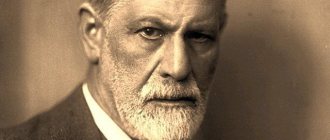Today, the most common form of psychotherapy is cognitive psychotherapy.
It is based on the assumption that the causes of human mental problems are erroneous thoughts. If they are detected and eliminated, then you can not only get rid of various mental disorders, but also prevent their occurrence in the future. Cognitive psychotherapy pays little attention to a person’s childhood memories, focusing on current problems, his inner world, thoughts, desires and fantasies. This is the main difference between this method of treating mental disorders and other popular types of psychotherapy: psychoanalysis and behavioral therapy.
The founder of cognitive therapy is Aaron Beck. Initially, he was engaged in psychoanalysis, but gradually became disillusioned with it and began to look for new methods of treating depression and affective disorders. Beck argued that the world around us is not bad, it is negative views of it that shape negative emotions and actions. Distortion of external circumstances in consciousness leads to the development of mental pathology, for example, depression.
Albert Ellis, the developer of the method of rational-emotive psychiatry, which has much in common with cognitive psychotherapy, worked independently of Beck. Today, cognitive therapy is a component of the cognitive-behavioral (behavioral) theory used by psychotherapists in their practice.
Goals and methods of cognitive psychotherapy
The main goal of cognitive psychotherapy is to identify dysfunctional thoughts in the patient and their subsequent transformation. But, besides this, experts identify five goals of cognitive therapy:
- complete elimination of the symptoms of the disorder or reduction in the manifestations of the pathology;
- prevention of relapse after correction of mental state;
- improving patients’ perception of other types of therapy, including medications;
- resolution of a person’s psychological and social problems that may arise against the background of the disorder or immediately before its manifestation;
- elimination of the prerequisites that gave impetus to the development of the disorder.
During treatment, the therapist helps the patient understand the extent to which his thoughts influence his behavior, emotions, and physical condition. After a full course of cognitive therapy, a person can independently identify thoughts that negatively affect his psychological state. And most importantly, change dysfunctional beliefs into more rational thoughts.
The main methods of cognitive therapy include combating negative thinking, using alternative strategies for perceiving problem situations, re-experiencing events from the past, and imagination. Each of these methods is aimed at giving the patient the opportunity to relive and forget negative experiences, as well as acquire new learnings.
Cognitive psychotherapy is often complex. In addition to cognitive methods, psychotherapists in their work use various behavioral techniques that successfully complement each other.
The most popular cognitive psychotherapy techniques
Treatment of mental disorders using cognitive psychotherapy is not just a way to combat a specific disease. This approach to therapy gives the patient a special perspective on everything that happens in his life. Thus, it is possible to prevent the development of relapses and other mental disorders. A person trained in the basics of cognitive psychotherapy is able to systematically monitor his own negative emotions and transform them into rational thoughts. This method is especially effective in combating panic attacks.
All techniques used in cognitive psychotherapy can be divided into two large groups:
- techniques aimed at identifying automatic thoughts of a negative nature. The main way to achieve this goal is to interview the patient, but the therapist can also use role-playing techniques. After the automatic thought is found by the patient, the therapist must check it with behavioral factors, as well as logical analysis. In some cases, the identified beliefs turn out to be a mythologem, but most often such thoughts nevertheless take place in reality, although they are not realized by the patient. The therapist must identify the relationship between the automatic thought and the traumatic situation and pathological emotional reactions;
- techniques that allow you to identify the unreasonableness of an automatic thought and cognitively reconstruct it. A person will be able to abandon a maladaptive thought only if he is completely sure of its “wrongness.” First of all, the validity of such thinking can be verified by its consequences. This technique is called decatastrophizing or “what if.” The patient imagines the consequences of the situation that frightens him, and understands that in fact nothing terrible will happen. You can push a person to check irrational thoughts with real actions. If the patient suffers from depression, believing that he is not capable of anything, then he can be given small tasks. Their successful implementation will restore a person’s faith in his own strength. The psychotherapist can also invite the patient to compare his situation with another case from his practice. By feeling sorry for a patient with similar problems, the patient automatically feels sorry for himself. As a result, the negative attitude towards oneself changes into pity and sympathy. A similar result can be achieved using the catharsis method, when the therapist encourages the patient to speak out and cry. In addition, there are a large number of other methods that allow you to change cognitive attitudes.
Throughout the course of therapy, the patient receives homework. He must track automatic thoughts and record his feelings in a special notebook. A psychotherapist may recommend reading certain literature and listening to recordings of psychotherapy sessions.
Most often, psychotherapy is individual, but group work can also be used. In the latter case, not the relationships between its individual members are examined, but the rationality of their thinking and behavior is assessed.
When can cognitive psychotherapy help?
Cognitive psychotherapy is used in the correction of most mental and psychoemotional disorders. But most often this type of therapy is used to treat depression. A depressed person experiences an exaggerated sense of loss, which may be real or imaginary.
Depression is characterized by the presence of negative thoughts of several directions. First of all, the patient develops a negative image of himself; he considers himself a loser, an inferior person. At the same time, they are given a negative assessment of the world around them and passing events, as well as their own future. Experts call this the cognitive triad of depression. To overcome this psycho-emotional disorder, it is necessary to work in each of these directions, replacing dysfunctional thoughts with rational thinking.
In addition to treating unipolar depression and increased anxiety, this type of therapy is also used to eliminate obsessive-compulsive disorder, various phobias, eating disorders, migraines, anxiety and anger attacks, and other personality and behavioral disorders.
Cognitive methods can be part of complex therapy in the treatment of schizophrenia and bipolar affective disorder. The combination of psychotherapy with medication can eliminate hallucinations in patients with schizophrenia and mitigate other symptoms of this pathology. Researchers have proven its effectiveness in the correction of many somatic diseases.
During therapy, the therapist works to solve the problem; he does not change the patient's personality characteristics or shortcomings. From the very beginning, the patient and therapist must come to some kind of agreement, outline the range of problems on which they have to work. It is possible to eliminate the manifestations of the above-mentioned disorders with the help of experimental testing of disaptive thoughts.
Brief Biography of Aaron Beck.
Aaron Temkin Beck was born in 1921 in Providence, USA, into a Jewish family that emigrated in 1906 from western Ukraine.
Three years before the birth of their son, his parents lost their daughter, who died of the flu, and Aaron's mother never recovered from this loss. This led to the fact that the boy was brought up and grew up in an atmosphere of hopelessness and constant depression, in which his mother constantly remained. Perhaps it is for this reason that, after graduating from school, he entered the Department of Psychiatry at the University of Pennsylvania.
After graduating from university, Beck begins his own practice and works for quite a long time within the framework of the psychoanalytic concept in which he was educated. Over time, he becomes disillusioned with psychoanalysis and begins to look for his own path, which leads him to a very original theory for that time, which explains the origin of psychological problems in a different way.
In psychoanalysis, the main cause of an individual’s neurotic manifestations is considered to be factors of the unconscious, which, entering into an obvious or hidden contradiction with the super ego, give rise to neurotic manifestations (frustrations that appear as a result of destructive reactions to the world around us). The solution to the problem within the framework of this school is seen as the therapeutic method of psychoanalysis, which consists in the patient’s awareness of his unconscious manifestations and the direct connection of neurosis with early traumatic experiences. The key to successful psychoanalysis is the subsequent reappraisal of the initially traumatic event and the reduction of its significance for the patient.
Within the framework of behaviorism, the cause of neurotic manifestations was considered to be the patient's maladaptive behavior, which was developed gradually in the course of personal history as a result of repeated influences (stimuli). The influences (stimuli) that gave rise to such behavioral strategies lay in the patient's past, but behavior therapy did not emphasize the importance of memories, as it did in psychoanalysis. Within the framework of the practical application of behavioral psychology, it was believed that a sufficient solution to psychological problems was the use of special teaching techniques to change the patient’s behavior, that is, changing a maladaptive strategy to an adaptive one. Behaviorists believed that developing correct behavior was the key to success.
As for Aaron Beck, his new concept lay beyond the mentioned methods and was very original for that time.
Special techniques
To treat some severe mental disorders, special cognitive therapy techniques are used. They are combined with medications and other types of mental health care. In this way, it is possible to reduce the severity of the symptoms of the disorder and increase the effectiveness of the main treatment.
Among the special methods of cognitive psychotherapy, the most popular are the methods used to treat such pathologies:
- Obsessive-compulsive disorder. When correcting this disease, the “four steps” method, developed by American psychiatrist Jeffrey Schwartz, is used. The goal of this treatment method is to change or simplify obsessive thoughts and “rituals” procedures, as a result they are reduced to a minimum. The patient must become aware of his illness and learn to resist its manifestations. The therapist explains to the patient which of his fears are real and which are caused by the disease. They are clearly differentiated, and the patient is shown a model of behavior of a healthy person. Typically, people who represent authority for the patient are chosen as examples. Work in this direction is being carried out in stages, in four steps. This is why the cognitive treatment method for OBD received its name.
- Schizophrenia. This type of disorder is incurable, as it is associated with changes in the cerebral cortex. But the use of cognitive and behavioral therapy methods allows people suffering from schizophrenia to accept their illness and learn to smooth out its manifestations. If the patient constantly conducts conversations with otherworldly entities or imaginary images, then the psychotherapist helps him understand that the conversations are not with living people. Gradually, the person with schizophrenia realizes that his interlocutor is a figment of his imagination, as a result of which such conversations are given less importance. Over time, the patient recalls the imagined image from memory less and less often.
- Addictions. Alcoholism and drug addiction are also caused by a person's incorrect automatic thoughts. A feature of the cognitive approach to treating these disorders is that the therapist must first talk with the patient about his long-term plans and life priorities. After all, a person’s short-term goals should depend on this. First of all, he needs to explain that the main goal of any living being is survival. All animals and people enjoy things that promote procreation and survival, such as food, sex, etc. Processes that harm life cause negative sensations (hunger, cold or heat). All these sensations are transferred to actions or situations associated with them. But a person suffering from some type of pathological addiction has a new source of pleasure that was not provided for by nature. As a result, the patient becomes unnecessary natural joys, he sets himself the goal of obtaining pleasure through artificial means, which is harmful to his health and survival. The therapist must convince the drug addict or alcoholic that with a certain desire he can achieve the right goals, which will allow him to get rid of depression and a painful return to reality. It is possible to lift your mood in a natural way if you improve the quality of your own life, increase your self-esteem and “rise” in the eyes of others. Psychotherapists draw up a “wish map” for patients with addictions. This is a diagram that indicates the relationship of basic values necessary for survival with instincts and complex summary associations. This card, among other things, indicates exactly how addiction harms long-term plans and prevents you from fully enjoying life. Using this technique, you can save the patient from most harmful habits, for example, gluttony, gambling or Internet addiction.
The effectiveness of cognitive psychotherapy in the treatment of these severe mental disorders is quite high, as confirmed by numerous studies in this area. Cognitive and behavioral therapy can reduce the likelihood of relapse of the disease several times.
New Brain Insights and Cognitive Behavioral Therapy
In the 60-70s. Since the 20th century, new data about the brain and cognitive processes have emerged. Computer science is developing (knowledge about the brain and cognitive processes is used as the basis for compiling computer programs, in turn, the brain and cognition are explained by analogy with a computer) and now it is no longer possible to treat the brain as a black hole.
As a result, the works of Piaget and his students describing cognitive processes occupy an increasingly important place in the work of psychologists. Vygotsky's works are actively translated into other languages and occupy a strong place in Western academic psychology. In psychotherapy, Aron Beck develops cognitive theory, and Albert Ellis develops rational-emotive theory, later combined into cognitive behavioral therapy (CBT). The main emphasis in these theories is on cognitive processes, which largely determine the human psyche, personality, behavior and psychopathology.









